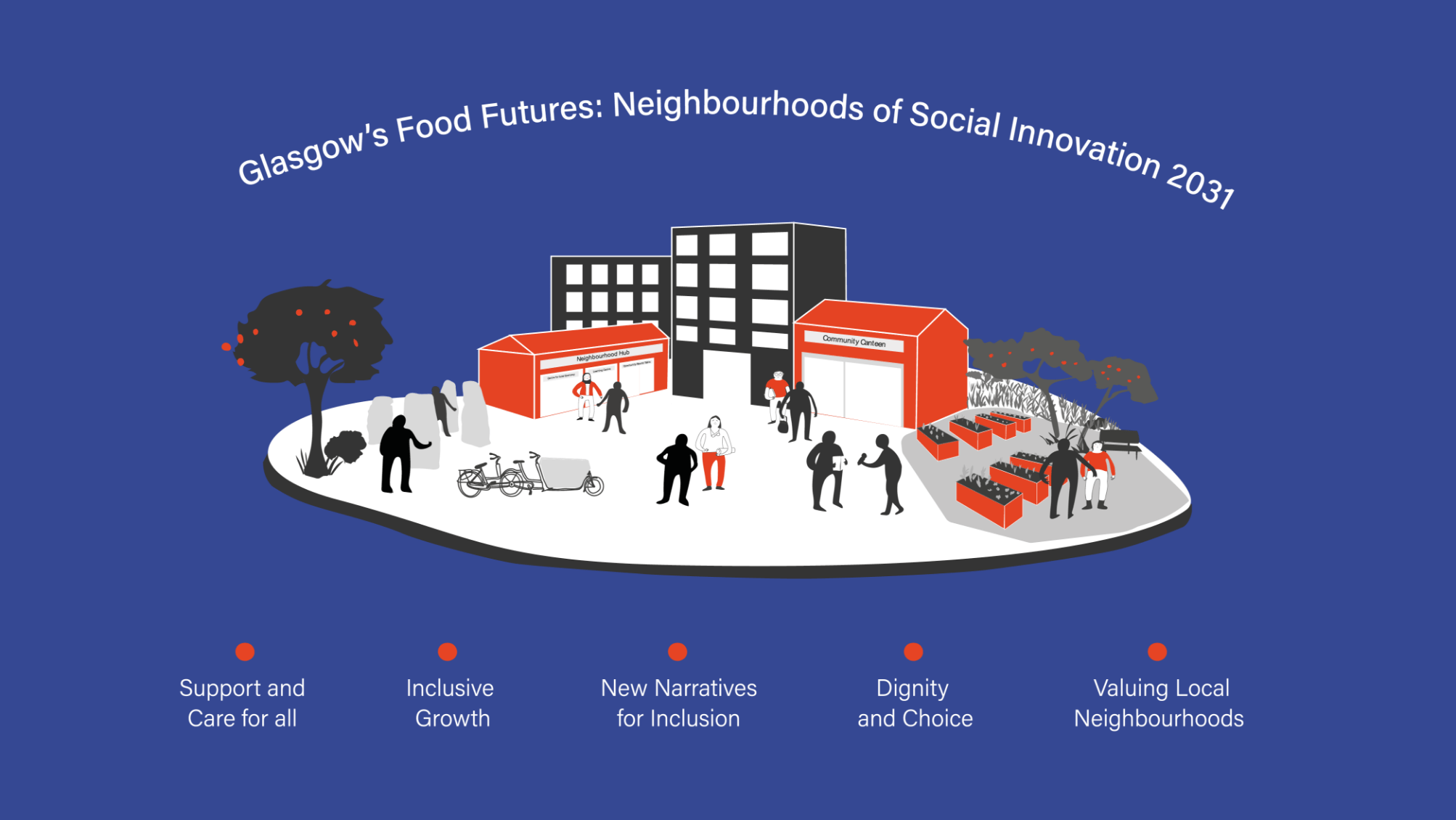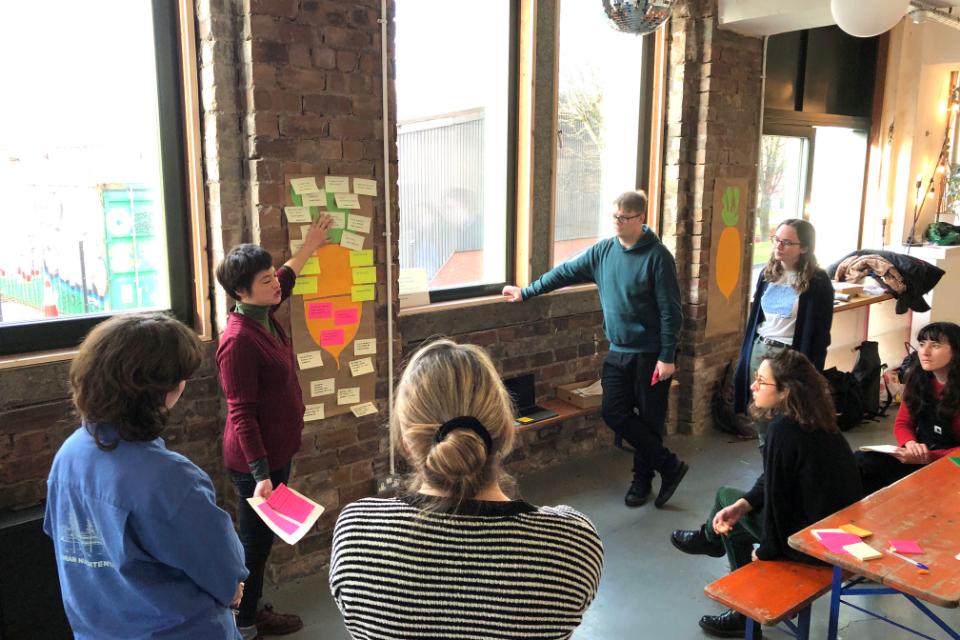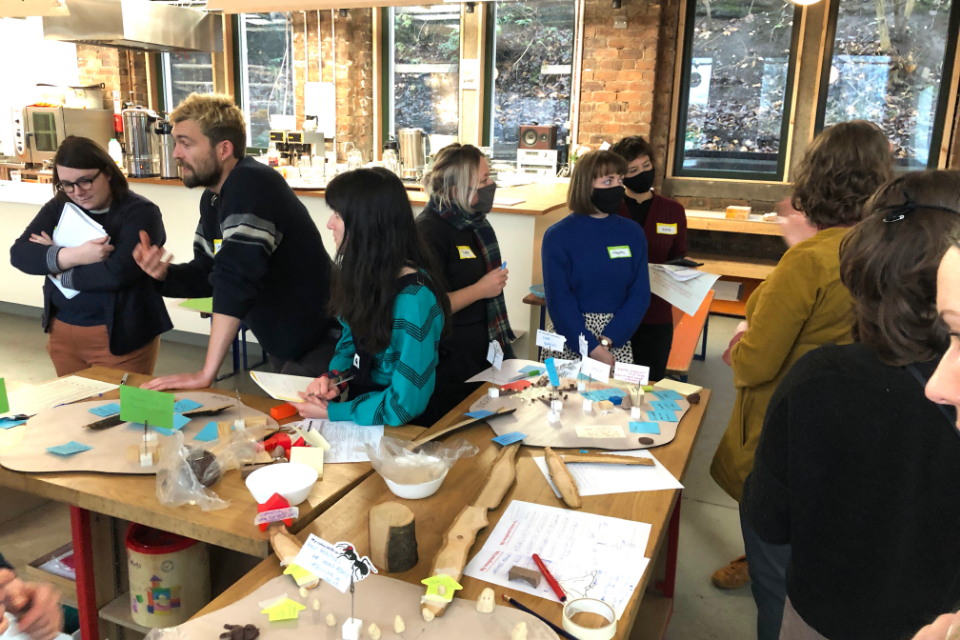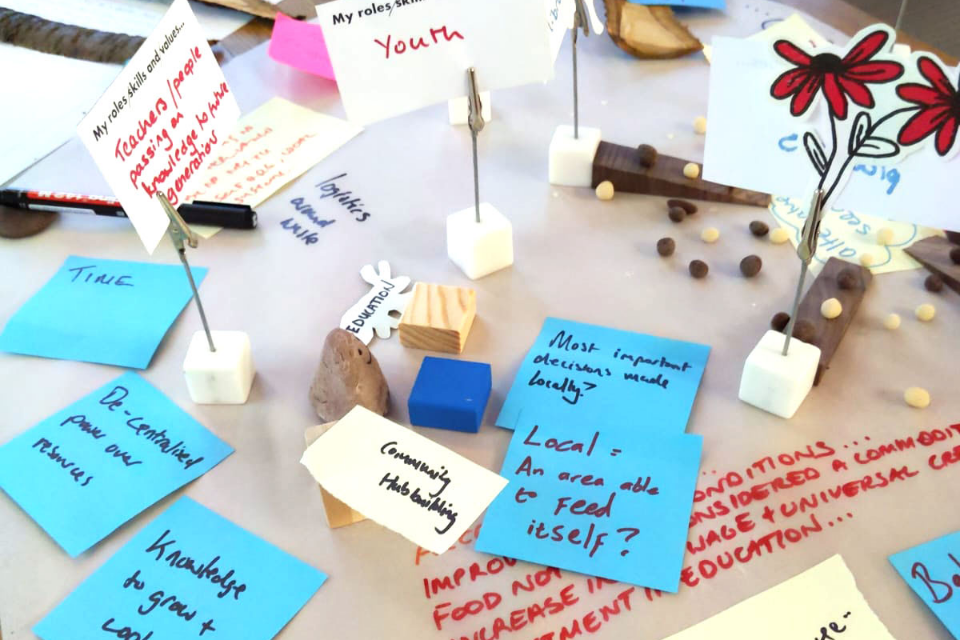Glasgow’s Food Futures: Local Neighbourhood of Social Innovation in 2031…
The Centre for Civic Innovation and The Glasgow School of Art have teamed up for the third year of Collaborative Futures. A three-and-a-half-month project that forms a significant part of the final year of study of the Masters in European Design programme at The Glasgow School of Art.

This year’s context is Glasgow’s food futures in 2031; a rich, multi-dimensional societal lens with which to collaboratively explore the future experiences of local people, their cultures, and the places and spaces they inhabit, to inform the CCI’s establishment of local ecosystems for Social Innovation across the city.
One of the key characteristics of Collaborative Futures is that after each iteration of the project, the teams findings are passed onto the next group to form a more rounded perspective when tackling the challenge assigned to them and building a bank of knowledge that can be used for the benefit of the city. Last year’s Collaborative Futures project highlighted the theme of “ecosystems of care and trust” and was centred on participatory democracy, and CCI’s objective to establish local ecosystems for Social Innovation across the city.
This year, the team explored what Glasgow’s food futures in 2031 might look and feel like as a local neighbourhood ecosystem for Social Innovation. In order to fully understand this year’s challenge, they spoke to food growers, policy writers, council representatives, social enterprises, producers, conservationists, scientists and academics to gain an understanding of the current food an systems and social innovation in Glasgow through a series of design-led workshops and interviews. They emerged with 5 core insights outlined below.
The first of these core values is giving more power to neighbourhoods. Citizens would like more autonomy in their community, allowing people to make decisions and pilot projects to build up skills and capacity in every area of the city. Next the team valued regenerative neighbourhoods. Making neighbourhoods more regenerative will help reduce the impact of the climate crisis, and build more assets and opportunities that can revitalise people and places. This leads to the third value, creating abundant neighbourhoods that are open to new possibilities such as, increased availability of produce, or creating jobs linked to growing, and other possibilities for re-imagining the city as a land of plenty. Following this it’s important that with all of this growth, there is a place for everyone at the table, creating more accessible, inclusive and responsive systems for people and the environment. Finally, the last piece of the jigsaw focuses on the potential possibilities within the local food economy as well as the health and well-being benefits linked to growing food and eating together.



A neighbourhood model of service delivery and progressing participatory democracy will demand that we have an agreed approach to citizen engagement in Glasgow which allows residents a greater say in how local services are designed and resources utilised.
The Centre for Civic Innovation, working alongside colleagues in NRS and Community Empowerment teams, is currently co-designing a consistent approach to neighbourhood design and engagement for Glasgow with our citizens at the heart of everything we do.
Our vision is to inspire and engage the citizens of Glasgow to
create a better future for everybody.
Click here to visit the projects website(current)
